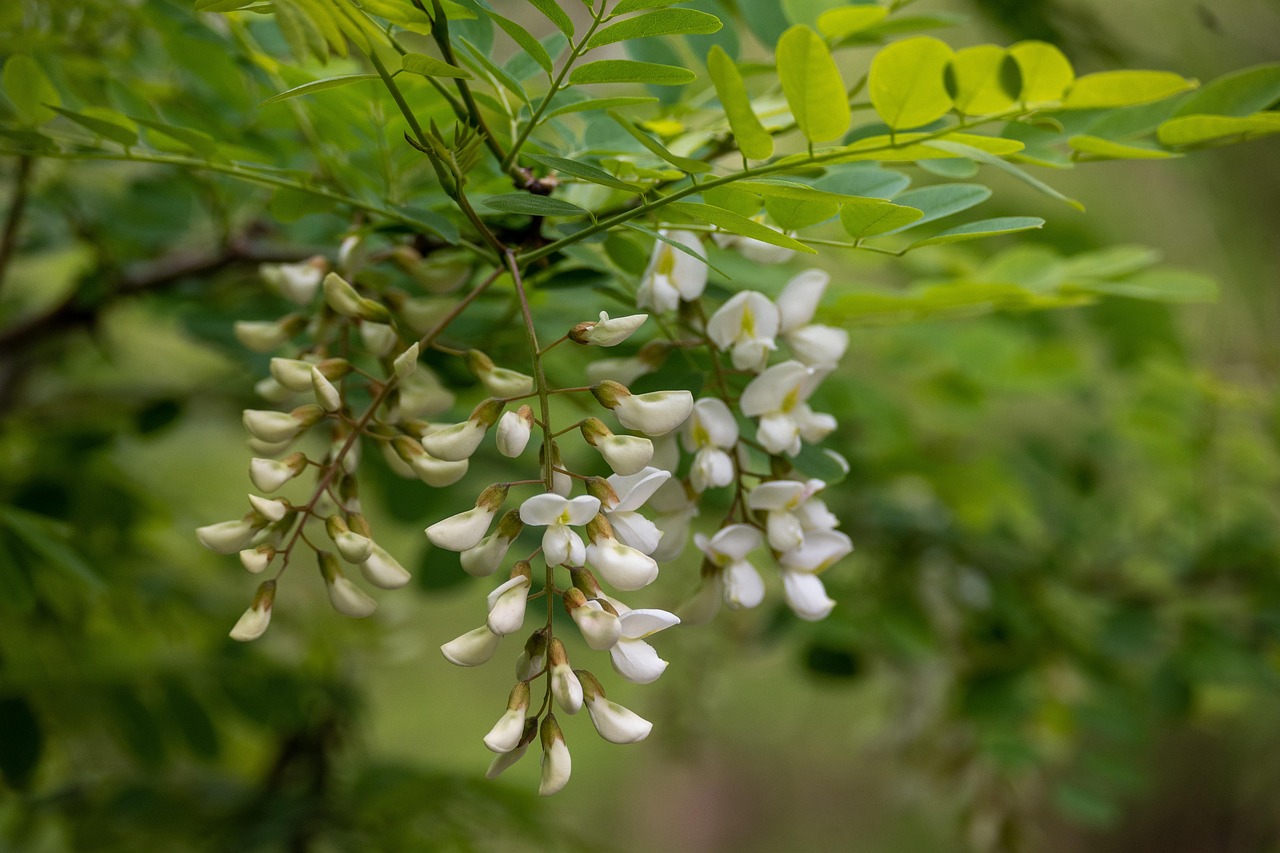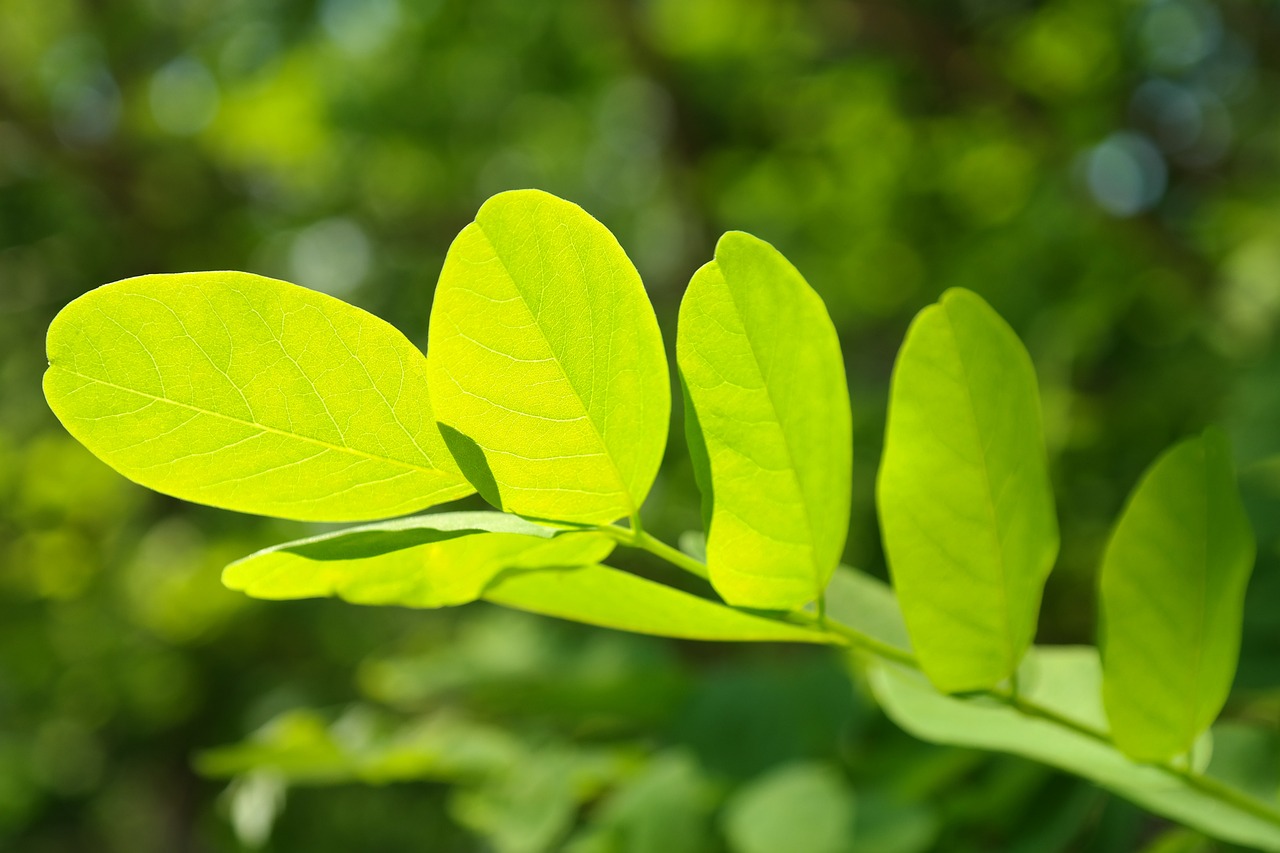Acacia trees exhibit a moderate growth rate, typically ranging from 1 to 3 feet per year. They are also highly drought-resistant, able to thrive in arid conditions due to their deep root systems and ability to store water.
The Acacia tree is a member of the legume family, known for its diverse species and adaptability. These trees are found in various climates around the world, particularly in Australia, Africa, and the Americas. Their ability to thrive in poor soil conditions makes them an excellent choice for reforestation and land reclamation projects. Additionally, Acacia trees play a crucial role in ecosystems by providing habitat and food for numerous wildlife species.

One of the most notable characteristics of Acacia trees is their growth rate. This rate can vary significantly based on factors such as species, environmental conditions, and care provided. Understanding these variables is essential for those interested in planting Acacia trees for landscaping or agricultural purposes.
Growth Rate of Acacia Trees
Acacia trees generally have a moderate growth rate, which can be influenced by several factors. The average growth rate is approximately 1 to 3 feet annually. However, some species can grow faster under optimal conditions. Key factors that affect growth include:
- Species: Different species of Acacia have varying growth rates. For instance, Acacia mangium can grow faster than Acacia dealbata.
- Soil Quality: Well-drained, nutrient-rich soils promote faster growth.
- Water Availability: While many Acacia species are drought-resistant, adequate water during early growth can enhance their overall development.
- Climate: Warm temperatures and sufficient sunlight contribute positively to growth rates.
The growth patterns of Acacia trees also reveal their adaptability. In regions with plentiful rainfall, they may experience rapid growth. Conversely, in arid regions, their growth may slow down but will continue due to their remarkable drought-resistant traits.

Drought-Resistant Potential
Acacia trees are renowned for their ability to withstand dry conditions. This drought resistance is primarily attributed to their unique physiological adaptations. The following characteristics enable Acacia trees to thrive even in challenging environments:
- Deep Root Systems: Many Acacia species develop extensive root systems that penetrate deep into the soil, allowing them to access groundwater during dry periods.
- Water Storage: These trees can store water in their stems and leaves, which helps them survive extended droughts.
- Leaf Structure: Acacia leaves often have a small surface area and a waxy coating that reduces water loss through evaporation.
- Photosynthesis Adaptation: Some Acacia species utilize a form of photosynthesis that is more efficient in hot and dry conditions.
These adaptations make Acacia trees a valuable asset in combating desertification and supporting ecosystem stability. They can improve soil quality and prevent erosion, making them an ideal choice for land restoration projects.
The ability of Acacia trees to thrive in arid environments has led to their popularity in landscaping and xeriscaping. Homeowners and landscapers appreciate their low maintenance requirements and ecological benefits. As climate change continues to impact weather patterns, the importance of drought-resistant plants like Acacia becomes increasingly significant.

| Factor | Impact on Growth Rate |
|---|---|
| Species | Varies widely among different types |
| Soil Quality | Better soil leads to increased growth |
| Water Availability | Adequate water enhances growth rates |
| Climate | Optimal conditions promote faster growth |
The resilience of Acacia trees not only supports their survival in harsh climates but also contributes to biodiversity. They provide habitats for various organisms, including birds and insects, thus playing a significant role in maintaining ecological balance.
In summary, the growth rate and drought-resistant potential of Acacia trees make them an exceptional choice for various agricultural and environmental applications. Their adaptability ensures that they remain a vital component of many ecosystems worldwide.
Ecological Benefits of Acacia Trees
Acacia trees are not only valued for their growth rate and drought resistance but also for the multitude of ecological benefits they provide. Their presence in various ecosystems contributes significantly to environmental health and biodiversity. Below are some of the key ecological benefits associated with Acacia trees:
- Soil Improvement: Acacia trees have the ability to fix nitrogen in the soil, enriching it and promoting the growth of other plants. This process enhances soil fertility, making it more productive for agricultural purposes.
- Erosion Control: The extensive root systems of Acacia trees help stabilize soil and prevent erosion. This is particularly important in areas prone to landslides or degradation.
- Habitat Creation: These trees provide shelter and food for a variety of wildlife. Birds, insects, and mammals rely on Acacia trees for nesting sites and nourishment.
- Carbon Sequestration: Acacia trees play a role in combating climate change by absorbing carbon dioxide from the atmosphere. This helps mitigate the effects of global warming.
Cultural and Economic Importance
Beyond their ecological significance, Acacia trees hold cultural and economic value in many regions. They are often utilized for their wood, medicinal properties, and aesthetic appeal. Here are some aspects of their cultural and economic importance:

- Timber Production: Acacia wood is prized for its durability and attractive grain. It is widely used in furniture making, flooring, and construction.
- Traditional Medicine: Various parts of the Acacia tree, including bark and leaves, have been used in traditional medicine for their healing properties.
- Cultural Symbolism: In some cultures, Acacia trees symbolize strength and resilience. They are often featured in art and literature, reflecting their importance in local traditions.
- Agroforestry: Farmers often integrate Acacia trees into agricultural systems. This practice improves crop yields while providing shade and shelter for livestock.
Strategies for Successful Cultivation
If you are considering planting Acacia trees, understanding the best practices for cultivation is essential. Here are some strategies that can enhance growth and sustainability:
- Select Suitable Species: Choose Acacia species that are well-adapted to your local climate and soil conditions. Research native species that thrive in your area.
- Soil Preparation: Before planting, prepare the soil by ensuring good drainage and adding organic matter. This will create a conducive environment for root development.
- Watering Regimen: While Acacia trees are drought-resistant, providing adequate water during the initial growth stages is crucial. Water young trees regularly until they establish strong root systems.
- Pest Management: Monitor for pests and diseases that may affect Acacia trees. Implement integrated pest management (IPM) practices to minimize damage without harming beneficial organisms.
Pests and Diseases Affecting Acacia Trees
Acacia trees can be susceptible to various pests and diseases that may hinder their growth and health. Recognizing these threats is vital for successful cultivation. Common issues include:
| Pest/Disease | Description | Control Measures |
|---|---|---|
| Acacia Psyllid | A sap-sucking insect that can cause leaf curling and stunted growth. | Use insecticidal soap or neem oil to control populations. |
| Leaf Spot | A fungal infection that causes dark spots on leaves, leading to defoliation. | Improve air circulation around plants and remove affected leaves. |
| Root Rot | Caused by overwatering or poor drainage, leading to decay of roots. | Ensure proper drainage and avoid excessive watering. |
By being proactive about pest management and disease prevention, you can help ensure the health and longevity of your Acacia trees. Maintaining vigilance will lead to a more resilient tree population in your landscape or garden.
The adaptability and resilience of Acacia trees make them a fascinating subject for study. Their growth attributes, coupled with ecological benefits, cultural significance, and successful cultivation strategies, highlight their importance in both natural and human-influenced environments.
Common Acacia Species and Their Characteristics
Acacia trees encompass a wide range of species, each exhibiting unique characteristics that make them suitable for different environments and uses. Understanding these species can help in selecting the right type for specific landscaping or ecological projects. Below are some of the most common Acacia species and their notable features:
| Species | Common Name | Key Characteristics |
|---|---|---|
| Acacia mangium | Black Wattle | Fast-growing, tolerant of poor soils, and used for reforestation. |
| Acacia dealbata | Silver Wattle | Known for its bright yellow flowers and aromatic foliage; drought-resistant. |
| Acacia koa | Koa Tree | A native Hawaiian species valued for its beautiful wood; prefers moist environments. |
| Acacia farnesiana | Sweet Acacia | Produces fragrant yellow flowers; attracts pollinators; drought-tolerant. |
Planting Acacia Trees: Best Practices
To ensure the successful establishment of Acacia trees, proper planting techniques must be employed. Here are some best practices for planting:
- Timing: The best time to plant Acacia trees is during the spring or early fall when temperatures are mild.
- Site Selection: Choose a location with full sun exposure and well-drained soil. Avoid areas prone to flooding.
- Pit Preparation: Prepare a planting hole that is twice as wide as the root ball but no deeper than the root ball itself. This allows for better root spreading.
- Spacing: Space trees adequately to allow for their mature size, typically at least 10 to 15 feet apart depending on the species.
Following these steps can help ensure that Acacia trees establish themselves effectively and thrive in their environments. Proper planning promotes healthy growth and longevity.
Caring for Acacia Trees
Once planted, maintaining Acacia trees requires regular care. Here are some essential care tips:
- Watering: Initially, water young trees deeply once a week until they are established. Afterward, Acacia trees generally require less frequent watering.
- Mulching: Apply a layer of organic mulch around the base to retain moisture and suppress weeds. Ensure mulch does not touch the trunk directly.
- Fertilization: In most cases, Acacia trees do not need heavy fertilization due to their nitrogen-fixing ability. However, a balanced fertilizer can be applied in early spring if necessary.
- Pruning: Prune dead or damaged branches to promote healthy growth. This should be done during the dormant season to minimize stress on the tree.
Environmental Impact of Acacia Plantations
The establishment of Acacia plantations can have significant environmental impacts, both positive and negative. Understanding these effects is important for sustainable management practices. Here are some key considerations:
Positive Impacts
- Biodiversity Support: Well-managed Acacia plantations can support a variety of wildlife by providing habitat and food sources.
- Soil Health Improvement: The nitrogen-fixing ability of Acacia species enhances soil fertility, benefiting surrounding vegetation.
- Erosion Control: The root systems of Acacia trees help stabilize soil, reducing erosion rates in vulnerable areas.
Negative Impacts
- Invasive Potential: Some Acacia species can become invasive outside their native range, outcompeting local flora.
- Biodiversity Loss: Monoculture plantations may reduce local biodiversity if native species are replaced.
- Water Usage: In arid regions, extensive Acacia plantations may deplete local water resources.
Caring for Acacia plantations involves balancing these positive and negative impacts to ensure that environmental benefits are maximized while minimizing potential harm to local ecosystems.
The diverse applications and characteristics of Acacia trees make them an intriguing subject for further exploration. Their integration into various landscapes and ecosystems highlights their adaptability and resilience in changing environments.
In addition to the environmental and ecological impacts of Acacia trees, their role in combating climate change is worth highlighting. As concerns about global warming increase, the significance of tree planting and sustainable forestry practices becomes paramount. Acacia trees, with their fast growth rates and ability to sequester carbon, contribute positively to these efforts. They effectively capture carbon dioxide from the atmosphere, playing a role in mitigating climate change impacts.
Furthermore, Acacia trees are vital in agroforestry systems. They can be intercropped with various agricultural species, providing shade and improving soil conditions for crops. This practice not only increases agricultural productivity but also enhances resilience against climate variability. Farmers benefit from the dual purpose of Acacia trees—providing timber and improving crop yield.
Challenges in Acacia Cultivation
Despite the numerous benefits of Acacia trees, several challenges come with their cultivation and management:
- Species Selection: Choosing the right species for a specific environment is crucial. Some species can become invasive or may not thrive in certain soil types.
- Pest Management: While Acacia trees are generally hardy, they can still fall victim to pests and diseases that require ongoing management efforts.
- Public Perception: In some regions, there may be resistance to planting Acacia due to concerns about their invasiveness or negative environmental impacts.
- Water Dependency: Although many Acacia species are drought-resistant, young trees require sufficient watering during their establishment phase. This can be challenging in extremely arid areas.
Addressing these challenges requires careful planning, ongoing education about best practices, and a commitment to sustainable management. By understanding the specific needs of different Acacia species and their interactions with local ecosystems, landowners can make informed decisions that benefit both their projects and the environment.
Final Thoughts
The growth rate and drought-resistant potential of Acacia trees make them invaluable in various ecological and agricultural contexts. Their ability to adapt to harsh environments and contribute positively to soil quality and biodiversity underscores their importance in sustainable forestry and land management practices. As we face increasing environmental challenges, incorporating Acacia trees into reforestation efforts and agroforestry systems presents a promising avenue for enhancing ecosystem resilience.
Ultimately, successful cultivation of Acacia trees relies on informed practices that consider both their benefits and potential drawbacks. By fostering an understanding of these trees and their ecological roles, we can leverage their strengths to develop sustainable landscapes that support both human needs and environmental health.
In conclusion, Acacia trees represent a remarkable example of nature’s adaptability. Their rapid growth, drought resistance, and myriad benefits create opportunities for restoration, conservation, and sustainable agriculture. As we continue to explore ways to mitigate climate change and enhance biodiversity, Acacia trees will likely play a pivotal role in shaping healthier ecosystems for the future.
